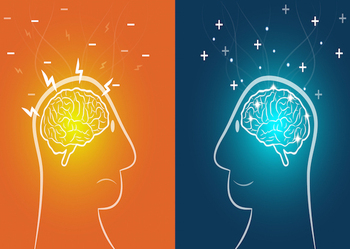We dislike outcomes which go against our expectations. Any incident that causes material loss becomes a source of frustration. We tend to ignore the quote that ‘failures are the pillars of success’. And this happens because we are not able to read the message that we are supposed to receive from what we term as negative incidents in life.
Tagore in Gitanjali says, “I had let my mind remain engrossed in worldly affairs; in the name of pleasure what I sought was only sorrow; but what you offered in the name of sorrow was actually joy”.
Life is a journey from what is mundane to what lies at the core. Both body and mind are to be used in pursuing that journey. And that journey can never progress unless there are obstacles. It is the tendency of the mind not to think deeply and act accordingly until certain incidents force us to do so.
In the sakta tradition the ten great kinds of knowledge called Das Mahavidya represent ten different routes to liberation of the Self, particularly which one can enjoy when one is alive, that is, jivanmukti. The goddess Dhumabati represents death, agony and all kinds of misery that one can think of. But then this is also an important way of making us realise the transitory aspect of what we want to cling to. Once that realisation comes in us and does not get swept away by a sense of attachment, permanent knowledge beomes accessible. The real challenge is to retain this knowledge persistently. Once we know what we achieve or what we consider as a positive outcome is only temporary in nature, the happiness associated with achievement does not weaken our mental balance or lead us to pride, which can be crushed in no time.
Ramakrishna clarifies that being a true devotee does not rule out the possibility of encountering agony and misery in life. As diverse incidents are inevitable in life, sorrow and joy too keep happening. But a true devotee keeps his objective distinct from these incidents. His efforts do not get influenced by the day-to-day happenings or what is known as the way of life. To highlight the absence of correlation between the path of devotion and the absence of misery, Ramakrishna cited the example of the pandavas from the Mahabharata. They were so devoted to Krishna, the living god, yet their misery knew no bounds. After burning in the fire of misery what remains is pure love.
How to initiate this habit of reading negative outcomes as positive ones? The best way is to reflect on what we call as a negative outcome. As we coolly keep watching the outcome with our inner eye, the feelings of fear, shame and frustration disappear and new energies flow in. This practice then slowly becomes a habit. The negative feelings associated with an outcome then cannot reside in the mind for long. Like water-drops on the lotus leaf they do not stay fixed or get deep-rooted.
Next, what efforts can be pursued to gain positive outcomes from the one that has a negative epithet? As we pose this question a degree of maturity shoots up. New inspirations flow in and new pursuits are found with a feeling of detachment. Detachment is often mistaken with laziness or inaction. But full effort without any attachment is the context in which the term is used. Once the internal system in us develops this practice of looking at negativity from a positive point of view, one develops a sense of freedom from everything. Isn’t freedom what we want, really?



Leave a reply